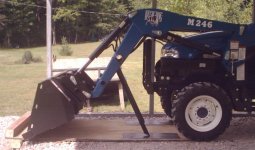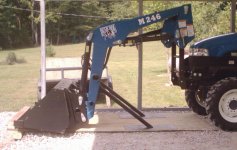OP
Mosey
Veteran Member
- Joined
- Jan 4, 2002
- Messages
- 1,565
- Location
- Conifer, Colorado
- Tractor
- 2000 New Holland TC29D with 7308 FEL, and top & tilt. 1950 John Deere B. 1940 Farmall A.
</font><font color="blue" class="small">( Just out of curiousity, why don't you pour a small area...say 4'x 6' concrete pad, under the carport to leave your Loader? Roy Jackson)</font>
</font><font color="blue" class="small">( Since you're not talking a big area, why not use the limestone sand, but mix one or two bags of portland cement in it? herbenus)</font>
You guys are right, this would probably work. But, the reason I don't want to do this is because someday I still want to move this carport and build a pole barn there with a concrete floor. I don't want to have to deal with busting up and removing a concrete pad.
</font><font color="blue" class="small">( Since you're not talking a big area, why not use the limestone sand, but mix one or two bags of portland cement in it? herbenus)</font>
You guys are right, this would probably work. But, the reason I don't want to do this is because someday I still want to move this carport and build a pole barn there with a concrete floor. I don't want to have to deal with busting up and removing a concrete pad.



